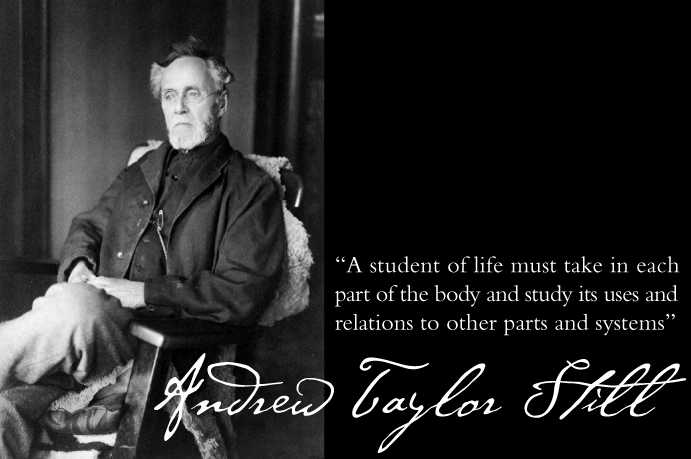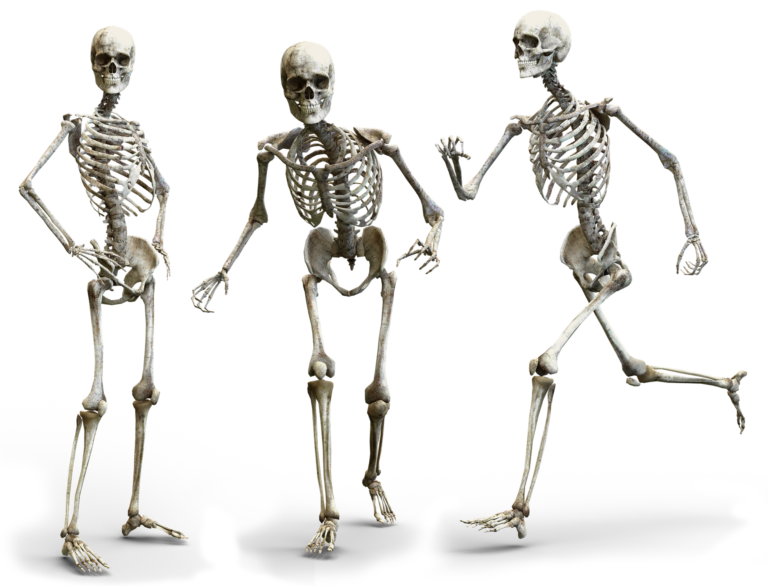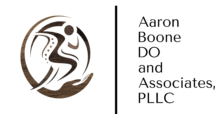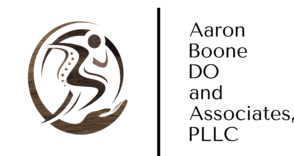About Osteopathy

The Founder: Andrew Taylor Still. MD, DO
Andrew Taylor Still, D.O. (August 6, 1828 – December 12, 1917) is considered the father of osteopathy and osteopathic medicine. Over his lifetime, he was also a physician & surgeon, author, inventor and Kansas territorial & state legislator. He was one of the founders of Baker University, the oldest 4-year college in the state of Kansas, and was the founder of the American School of Osteopathy (now A.T. Still University), the world’s first osteopathic medical school and hospital, in Kirksville, Missouri.
Still believed that osteopathy was a necessary discovery, because the current medical practices of his day often caused significant harm and conventional medicine had failed to shed light on the etiology and effective treatment of disease.
At the time A.T. Still practiced as a physician, medications, surgery, and other traditional therapeutic regimens often caused more harm than good. Some of the medicines commonly given to patients during this time often resulted in more deaths than cures. Dr. Still sought to reform existing 19th century medical practices. He investigated alternative treatments, such as hydropathy, diet, bone-setting, and magnetic healing. Still found appeal in the relatively tame side effects of those modalities, and imagined that someday “rational medical therapy” would consist of manipulation of the musculoskeletal system, surgery and very sparingly used drugs.
He invented the name “osteopathy” by blending two Greek roots: osteon for bone, and pathos for suffering, in order to communicate his theory that disease and physiologic dysfunction were etiologically grounded in a disordered musculoskeletal system. Thus, by diagnosing and treating the musculoskeletal system, he believed that physicians could treat a variety of diseases and spare patients the negative side-effects of drugs.
A.T. Still founded the first school of osteopathy based on this new approach to medicine – the school was called the American School of Osteopathy (A.S.O.) (now A.T. Still University) in Kirksville, Missouri in 1892. Interestingly also, close to half of the first class of the A.S.O. were women, something that was very uncommon in medicine at the time. Still was also one of the first physicians to promote the idea of preventative medicine and the philosophy that physicians should focus on treating the disease rather than just the symptoms.


What is a D.O.?
From the American Osteopathic Association:
Doctors of Osteopathic Medicine use a unique whole-person approach to help prevent illness and injury.
Accounting for approximately 11% of all physicians in the United States, Doctors of Osteopathic Medicine, or DOs, bring a unique, patient-centered approach to every specialty across the full spectrum of medicine. They are trained to listen and partner with their patients to help them get healthy and stay well.
DOs practice in all medical specialities, including primary care, pediatrics, OBGYN, emergency medicine, psychiatry and surgery. Moreover, DOs hold some of the most prominent positions in medicine today, including overseeing care for the President of the United States, the NASA medical team, Olympic athletes and many who serve in the uniformed services.
From their first days of medical school, DOs are trained to look beyond your symptoms to understand how lifestyle and environmental factors impact your well-being. They practice medicine according to the latest science and technology, but also consider options to complement pharmaceuticals and surgery.
As part of their education, DOs receive special training in the musculoskeletal system, your body’s interconnected system of nerves, muscles and bones. By combining this knowledge with the latest advances in medical technology, they offer patients the most comprehensive care available today.

Osteopathic Manipulative Treatment
The Tenets of Osteopathic Medicine:
- The body is an integrated unit of mind, body, and spirit.
- The body possesses self-regulatory mechanisms, having the inherent capacity to defend, repair, and remodel itself.
- Structure and function are reciprocally interrelated.
- Rational therapy is based on consideration of the first three principles.
What is Osteopathic Manipulative Treatment?
OMT is a hands-on treatment method that can help diagnose, prevent, and treat a variety of conditions. When carrying out OMT, a DO will use a number of different techniques that move, stretch, and manipulate a person’s muscles and joints.
Medical professionals often split OMT techniques into three categories:
- Direct: Direct methods use an activating force to move tissues through range-of-motion barriers.
- Indirect: Indirect methods place the body in a position of ease during treatment.
- Combined: Combined methods use a mixture of direct and indirect techniques.
These techniques involve DOs moving the person’s limbs into different positions. The DO may also apply pressure to limbs and manipulate the person’s body to stretch muscles and properly align their joints.
A DO may use slow movements and continuous pressure when carrying out OMT, or they may use quick, sudden movements.
OMT should not be painful. If a person does experience pain during OMT, they should let the DO know right away.
- The body is an integrated unit of mind, body, and spirit.
- The body possesses self-regulatory mechanisms, having the inherent capacity to defend, repair, and remodel itself.
- Structure and function are reciprocally interrelated.
- Rational therapy is based on consideration of the first three principles.
Click here for further reading on OMT from Medical News Today: https://www.medicalnewstoday.com/articles/osteopathic-manipulative-therapy

